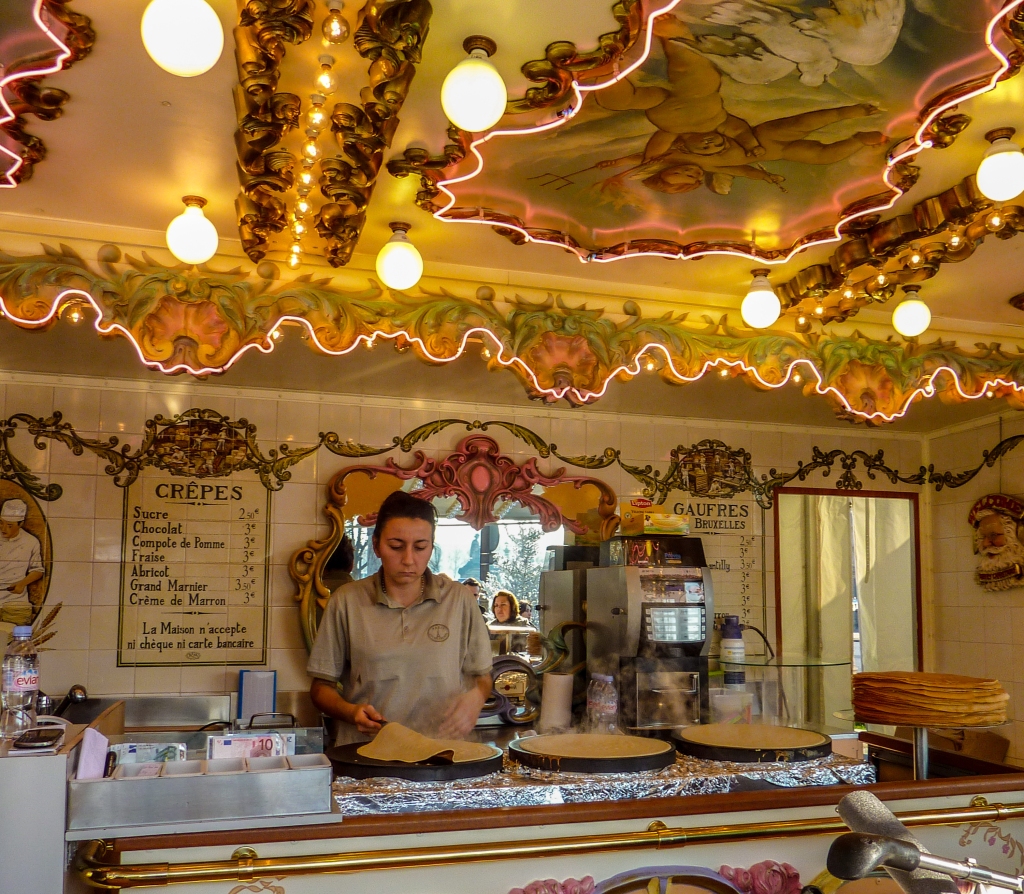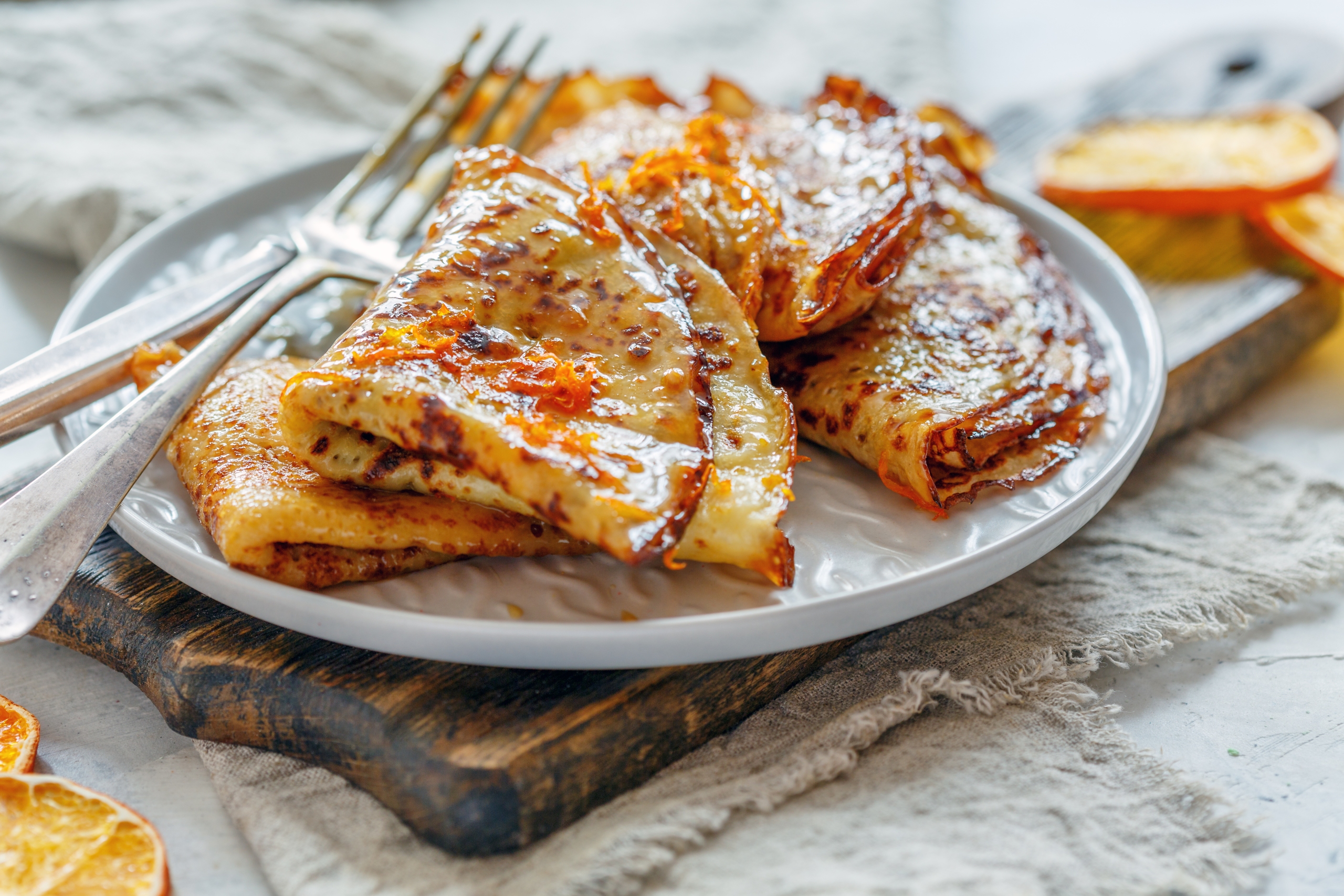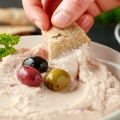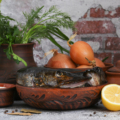Crêpes evoke images of France, where chic pâtisseries and historic cafés offer an inviting retreat. Yet, these delicate pancakes, with their versatile charm, have transcended their French roots to captivate palates worldwide.
Origins: From Rustic Galettes to Culinary Elegance
The story of crêpes begins in Brittany, a region in northwestern France known for its fertile lands and robust culinary traditions. As early as the Middle Ages, Bretons prepared rudimentary pancakes using buckwheat flour, a hardy grain introduced from Central Asia. This flour, dark and earthy, became the foundation for the first galettes, savory crêpes that mirrored the rustic simplicity of the region.
Over time, the transition from buckwheat to wheat flour, a product of agricultural expansion and refinement, allowed for lighter, sweeter crêpes. By the 19th century, ingredients like butter and sugar elevated these once-humble creations into symbols of indulgence, marking their place in refined French cuisine.
Crêpes, Candlemas, and Timeless Traditions
Crêpes carry a rich tapestry of traditions, including their connection to Candlemas (La Chandeleur). Over 1,500 years ago, during Pope Gelasius I’s tenure, a comforting dish made of flour and eggs was reportedly served to French pilgrims after their Candlemas procession. The crêpes’ golden, circular form was seen as a symbol of the sun and renewal—an apt metaphor for hope in the chill of winter.
In rural France, crêpes also bore a more practical significance. Superstitions held that failing to prepare crêpes on Candlemas could jeopardize the harvest. To ensure good fortune, leftover flour was transformed into crêpes, heralding the approach of spring.
The Versatility of Crêpes
What makes crêpes universally beloved is their adaptability. Whether sweet or savory, simple or elaborate, crêpes offer endless possibilities for creativity.
Sweet Crêpes delight with minimal additions like lemon and sugar or indulge with decadent fillings such as chocolate spread or fruit preserves. Among the most celebrated is the Crêpe Suzette, a dessert born in the early 20th century and served flambéed with a citrusy Grand Marnier sauce—a visual and gastronomic marvel.
Savory Galettes, often crafted from buckwheat flour, provide a robust alternative. Filled with ham, cheese, eggs, or vegetables, they remain a staple in Brittany. The Galette Complète—a harmonious blend of egg, ham, and cheese—is a perennial favorite.

Crêpes Around the World
Crêpes have inspired culinary variations across continents. In Russia, blini, a thicker version, often accompanies caviar or sour cream. Scandinavia offers thin pancakes paired with berries, while in parts of Asia, delicate rice-flour crêpes provide a unique twist. Each culture embraces the crêpe’s inherent flexibility, blending local flavors and traditions.
Crafting the Perfect Crêpe
Making crêpes is a straightforward yet rewarding process.
- Ingredients: A simple mix of flour, eggs, milk, butter, and salt forms the base. For sweet crêpes, add sugar and vanilla.
- Smooth Batter: Whisk the ingredients until lump-free. Allow the batter to rest for 30 minutes to ensure a uniform texture.
- Right Equipment: A non-stick crêpe pan, evenly heated, is essential.
- Technique: Pour a ladleful of batter, swirling the pan for even coverage. Flip after about a minute.
Crêpe Suzette: The Pinnacle of Crêpe Artistry
Among crêpe recipes, the Crêpe Suzette stands out for its flavor and drama.
- The Batter: Combine 125 grams of flour, a pinch of salt, and two eggs. Gradually whisk in 250 milliliters of milk until smooth. Add 30 grams of melted butter for richness. Rest the batter for at least 30 minutes before cooking thin, golden crêpes.
- The Suzette Sauce: Melt 80 grams of butter with an equal amount of sugar in a large pan until caramelized. Stir in the juice of two oranges and one lemon, along with their grated zest, reducing the mixture into a glossy, fragrant glaze. Fold the crêpes into quarters and immerse them in the sauce, letting them soak up its bright flavors.
- The Flambé: For a dazzling finish, warm 50 milliliters of Grand Marnier or Cointreau, then pour it over the crêpes. Carefully ignite the alcohol to create a brief, fiery spectacle that enhances the dish’s citrusy aroma.
A Timeless Treat
Crêpes, whether served at a bustling Parisian café or reimagined in kitchens across the globe, remain a testament to culinary ingenuity. Their ability to traverse cultural boundaries while retaining their French soul is a reminder of how food connects us through shared flavors and timeless traditions.





